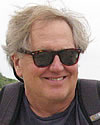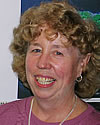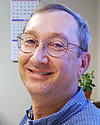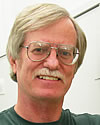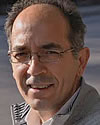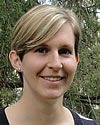2015 Kirk Bryan AwardPresented to: |
||
for “Sea-level history during the Last Interglacial complex on San Nicolas Island, California: implications for glacial isostatic adjustment processes, paleozoogeography and tectonics”
|
Citation by Margaret E. Berry
The Kirk Bryan Award for Research Excellence allows us to acknowledge and honor the authors of a recent publication of distinction. This year the award goes to Dan Muhs, Kathleen Simmons, Randy Schumann, Lindsey Groves, Jerry Mitrovica, and DeAnna Laurel for their 2012 paper entitled “Sea-level history during the last interglacial complex on San Nicolas Island, California; implications for glacial isostatic adjustment processes, paleozoogeography and tectonics”—published in Quaternary Science Reviews. This meritorious paper, which represents major advancements in both Quaternary geology and geomorphology, truly embodies the spirit of the Kirk Bryan Award and is highly deserving of it. Published at a time when the understanding of past sea level rise has never been more important, the paper is also timely.
Lead author, Dan Muhs, has studied Quaternary sea-level history recorded by marine terraces in wide-ranging locations throughout the world. Muhs infuses his vast knowledge of this topic into the paper in a way that makes it an invaluable resource for the scientific community. With coauthors Simmons, Schumann, Groves, Mitrovica, and Laurel providing additional expertise, the paper takes a unique, multidisciplinary approach to address key issues related to Quaternary sea-level history on San Nicolas Island. The approach integrates coastal and tectonic geomorphology, geophysics, field mapping, geochronology, and paleozoogeography. The results are data driven, based on accurate and precise field measurements of past sea level indicators, 65 new U-series ages for corals, and thorough identification of the marine invertebrate fauna contained in the marine terrace deposits. Through this creative approach, the paper addresses key questions about the magnitude of sea level rise on San Nicolas Island during relative high sea level stands at 80 ka, 100 ka, and 120 ka, which has implications for global ice volumes at those times. It documents that paleotemperatures differed during the sea stands, and that individual terrace deposits can represent more than one sea stand. It also provides uplift rates that are directly applicable to earthquake hazard research for the Southern California coast, contributing to our understanding of active tectonics in an area that has a serious earthquake hazard.
Among all of the significant contributions this paper makes, perhaps one of the most far-reaching is its validation and refinement of the idea that glacial isostatic adjustment (GIA) processes cause an unequal response in sea level over long distances from melting ice sheets, and produce different late Quaternary sea level records from one geographic locality to another. For many years, the conventional approach for interpreting a suite of undated or partially dated marine terraces has been to assume global, eustatic sea level change, and to correlate the terraces to a reference sea level curve like that developed from the paleo-sea level record of Barbados or New Guinea. However, Muhs and coauthors demonstrate that glacial isostatic adjustment processes negate the existence of a global eustatic sea level curve, and that use of a curve developed from a geographic locality like Barbados or New Guinea to interpret sites at mid- to high latitudes in the northern Hemisphere will probably lead to false conclusions. Not only is this key to understanding past sea level rise and ice volume fluctuations, this result has immense implications for seismic risk assessment in places like the Southern California coast, where rates of uplift are often determined from marine terrace chronology.
This innovative, cogently written paper has wide-spread relevance to a number of sub-disciplines in the geosciences and will be an important contribution to Quaternary geology and geomorphology for years to come. It is a paper clearly worthy of the Kirk Bryan Award.
 2015 Kirk Bryan Award — Response by Daniel R. Muhs
2015 Kirk Bryan Award — Response by Daniel R. Muhs
Good evening! It is an honor to receive this award and we have many people to thank. First and foremost, we would like to thank Margaret Berry, fellow geologist at the U.S. Geological Survey, who nominated us for the award. Thank you, Margaret, and thank you for your kind comments. We thank the Quaternary Geology and Geomorphology Division of the Geological Society of America for seeing fit to choose us to receive this prestigious award this year. There are very few scientific studies these days that are the result of a single person’s efforts. Our increasing recognition of the complexity of the natural world requires that most scientific problems be tackled in a team effort and our work on the California coast is no exception. To my co-authors, then, I offer my heartfelt thanks. Kathleen Simmons generated many U-series analyses of tiny, dirty, hard-to-clean corals from San Nicolas Island that gave us our chronology. Lindsey Groves identified hundreds of often wave-worn or fragmentary fossils from deposits all over the island and worked out their paleozoogeographic significance. Randy Schumann, DeAnna Laurel and I hiked up and down the canyons and along the sea cliffs to examine dozens of exposures in order to map the terraces, identify key geomorphic features, and get precise GPS elevations. Finally, Jerry Mitrovica, this year’s winner of GSA’s Arthur Day Medal, took time from a busy schedule to generate the first GIA model of sea level history over the last interglacial-glacial cycle for the California coast. What a talented group of people I have gotten to work with!
Through the course of my schooling and career, I have been fortunate in having wonderful teachers and colleagues. Despite going to two landlocked universities, I was lucky to have professors who shared my interest in the California coast and conducted some of the pioneering studies of marine terraces there. At the University of Illinois, I studied with the late Don Johnson, who had worked on the marine terraces of the Channel Islands. Don kindled my first interests in the Earth sciences and passed on his love of the Channel Islands to me. My first geomorphology course at the U. of I. was from Chuck Alexander, who did a now-classic study of the terraces near Santa Cruz, California, and articulated, for the first time, our current understanding of the relations between terraces, tectonic uplift, and sea level history. At the University of Colorado, where I did my Ph.D. work, I was fortunate to have Pete Birkeland as my advisor. Pete’s mapping of the marine terraces at Malibu still stands as the definitive work of that area. Also at CU, I worked with Bill Bradley, who studied the marine terraces around Santa Cruz. He is one of the few geomorphologists who excelled at both process-oriented studies of marine terrace formation and their context in Quaternary sea-level history. I could not have picked four better teachers.
At the U.S. Geological Survey, I was introduced to uranium-series dating by John Rosholt, who hired me. John was one of the discoverers of uranium-series disequilibrium. He was a patient teacher who took time to teach uranium isotope systematics to a field-oriented, dirt geologist. For gaining an understanding of uranium-series geochronology, right from the beginning, I was learning from the best. The U.S. Geological Survey has been extremely supportive of our work on the world’s coastlines through our “Geologic records of high sea levels” project, supported by the USGS Climate and Land Use Change Research and Development Program. We thank the program for its support of our efforts in learning sea level history.
For our field work on San Nicolas Island, we thank the U.S. Navy’s Range Sustainability Office of Naval Base Ventura County. U.S. Navy archaeologists Lisa Thomas and Steve Schwartz of that program have arranged countless trips to the island, facilitated transportation and logistical support, and have provided good company and lots of humor in the field. Thank you Lisa and Steve!
Finally, thanks go to my wife Tracy. She helped me in the field the first summer I worked on the marine terraces of San Nicolas Island, a long time ago. She has always been supportive of my work and shares my love of the California Channel Islands.
Past winners of the Kirk Bryan Award have been prestigious scientists who have been role models for us. In receiving this award, we are honored to be in such distinguished company. Some of us were fortunate to have Kirk Bryan Award winners as our own teachers. Pete Birkeland (KBA in 1988) was my advisor; Stan Schumm (KBA in 1979) was Randy’s advisor; Ellen Wohl (KBA in 2009) is DeAnna’s current advisor. We are very honored to be counted among these illustrious scientists. Thank you!

